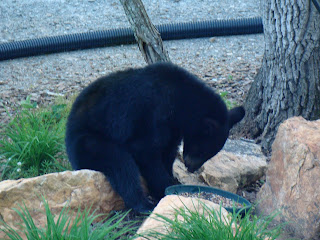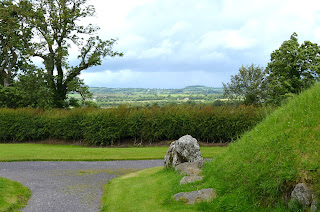Subject:
Màiri’s Musings From the Sunroom – Mercenary Brabanters
One of the things I love most about
writing historical romance is that integral component of the subject, research.
History is endlessly intriguing as one delves into cultures, customs, languages
and habits of peoples who lived in times and places far different from one’s
own.
As I study the refined societies of the
ancient Brythons or those of the High Medieval period, I occasionally feel as
if I’ve wandered, not into another time, but onto an alien planet. Amazingly
sophisticated levels of knowledge and technology often coexisted hand in hand
with bizarre—and sometimes deadly—beliefs.
One of the most gripping areas of
inquiry is the art of war. Brutality and conflict have characterized humanity’s
struggle for life from the very earliest of oral tradition and written record.
There is an undeniable fascination in the study of the ancient methods of conquest.
An enduring aspect of the making of war
throughout the centuries was the mercenary—that hardy soul, peculiarly of ‘foreign’ birth trained in the art of
combat-for-pay. Also known in those early days by the various terms ‘mercennarios’, ‘solidarii’ and ‘stipendiarii’, the reputation of these
warriors was such that they might be hated and feared or glorified and blessed,
both at once.
However, more often than not their
chosen profession was vilified by the general populace, but not, as is the
modern viewpoint, because they owed loyalty only to the one who paid them. It
was common practice of those days for knights and warriors to fight for coin
[even Crusaders], once they had fulfilled their forty-day ‘duty’ to their lord.
But the monarchs and noblemen who hired them understood their positions—and frequently
their very lives—depended on these skilled fighters. They used them as
extensively as their coin would allow.
Historians agree mercenary armies in
general were no more rapacious than regular troops. ‘Ravaging’ and
‘siege-craft’ were methods of warfare practiced by all armies. Kings routinely
pursued the ‘scorched earth’ policy as a first step in launching war.
As specific units, there were among the
mercenaries those with reputations as ‘honorable’ fighters, and those who
became famous for their brutality, cruelty and excessive use of force. One
particular band generally classed with the latter was the Brabanters [aka Brabácons,
Cotereaux or Routiers
(‘ravagers’)], so called because they originated from the area of Brabant
located in what is now the Netherlands and Belgium. [Brabant was made a duchy
of the Holy Roman Empire, c. 1190.] Later men of this affiliation were drawn
from all areas of northern Europe.
The expense of hiring Brabanters was
significantly greater than other early medieval troops, but they were among the
elite warriors of their day. Unlike the regular armies composed of knights
performing their required forty-day service, Brabanters willingly fought year
round. Warfare was their way of life.
History records that more than one king
owed his continued reign to the service of the Brabanters. One example was King
Henri II’s successful use of Brabanter warriors in the Battle of Dol, Brittany,
during the rebellion of 1173.
Among the most famous of the Brabanters
was Mercadier, “prince of the Brabanters” and commander of the Brabanter forces
in southern France. He fought in the Third Crusade. Later, his loyalty was
given to Richard I, Coeur de Lion,
whom he faithfully served until the king’s death (and after, when he captured
the archer who shot and killed the king and had the man flayed.)
Brabanter archers—crossbowmen—may be
the originators of the word “gaffle”. This was a steel piece on a crossbow that
provided the leverage to bend the bow.
The Brabanters were among the most
ruthless and brutal of the mercenary forces. Bloodthirsty and savage, they
terrorized entire populations. As a result, the Third Lateran Council of 1179
condemned them en masse, directing that all who hired them be excommunicated.
Finally, the Magna Carta of 1215
banished all foreign mercenaries from England (which King John promptly ignored
by hiring large numbers of Brabanter forces under the leadership of Walter Buc.)
Mercenaries of Brabant were first seen
in England with William the Conqueror, though it was not until the time of King
Stephen they appeared in significant numbers. King Henri II used them
extensively, but for the most part kept them out of England (they served mostly
in France). A little over a century later Brabanter mercenaries served in the
Hundred Years War, fighting with the English armies in Cambrai and Tournay,
France.
Sources:
Wikipedia
Dictionary of Medieval Terms and Phrases. Christopher Coredon with Ann
Williams.
Henry
II: A Medieval Soldier At War, 1147-1189, 1189, John D. Hosler
Mercenaries
in Medieval and Renaissance Europe, Hunt Janin with Ursula Carlson
Chivalry
in Medieval England, Nigel Saul
English
Historical Documents. 4. [Late Medieval]. 1327-1485, edited by A.R. Myers
Mercenaries
of the Angevin Empire: Reputations and Royal Power, Andrew Rice, Florida Gulf
Coast University
A
Glossary; or Collection of Words, Phrases, Names and Allusions to Customs,
Proverbs, Etc., Robert Nares
The
Influence of Low Dutch on the English Vocabulary, E.C. Llewellyn



















